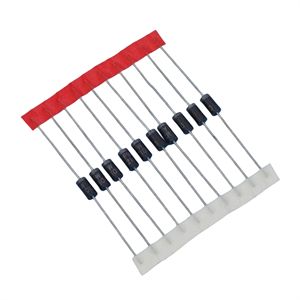Date:2024-11-28 Categories:Product knowledge Hits:371 From:Guangdong Youfeng Microelectronics Co., Ltd
When choosing a diode, there are many key factors to consider. Here is a detailed explanation of 15 key elements to help you better understand diode selection.
1. Voltage level: The voltage level of a diode refers to the maximum reverse voltage it can withstand. When selecting, it is important to ensure that the maximum reverse voltage of the diode can meet the requirements of the actual circuit to avoid damage caused by overvoltage.
2. Current level: The current level of a diode refers to the maximum forward current it can withstand. When selecting, it is important to ensure that the forward current of the diode meets the requirements of the circuit to avoid damage caused by overcurrent.
3. Forward voltage drop: Forward voltage drop refers to the voltage drop when a diode is conducting in the forward direction. When selecting, the appropriate forward voltage drop value should be chosen according to the power supply voltage and current requirements of the circuit to ensure normal operation of the circuit.
4. Reverse leakage current: Reverse leakage current refers to the leakage current of a diode under reverse voltage. When selecting, the appropriate reverse leakage current value should be chosen according to the requirements of the application scenario to ensure the stability and reliability of the system.
5. Durability: When selecting, the durability of the diode should be considered, including its lifespan, high temperature resistance, vibration resistance, and other characteristics. Especially in high-temperature environments or when applied in industrial fields, diodes with high durability should be selected.
6. Packaging types: There are various packaging types for diodes, such as DO-35, SOT-23, etc. When selecting, the appropriate packaging type should be chosen based on the actual layout and installation requirements.
7. Reliability and Quality: When selecting, choose diodes with high reliability and quality to ensure their long-term stable operation and good performance.
8. Working temperature range: Diodes have different working temperature ranges. When selecting, the appropriate working temperature range should be chosen according to the actual usage environment to ensure that the diode can work normally.
9. Response time: Response time refers to the time it takes for a diode to turn off, turn on, or turn off. When selecting, the appropriate response time should be chosen according to the requirements of the application scenario to ensure that the diode can meet the operating speed requirements.
10. Overvoltage protection: Some diodes have overvoltage protection function, which can provide protection in case of overvoltage. When selecting, it is necessary to choose diodes with overvoltage protection function based on actual application requirements.
11. Temperature characteristics: The characteristics of a diode will change with temperature. When selecting, temperature characteristics should be considered and diodes that meet actual usage conditions should be chosen.
12. Availability and Cost: When selecting, the availability and cost of diodes should be considered. Some special specifications of diodes may be difficult to obtain or expensive, and require comprehensive consideration.
13. Noise: Some applications have high requirements for noise, so when selecting, attention should be paid to choosing diodes with lower noise.
14. Packaging form: The packaging form not only affects the volume of the diode, but also its heat dissipation performance and installation method. When selecting, it is necessary to choose the appropriate packaging form based on the actual application scenario.
15. Application requirements: The most important thing is to choose diodes based on actual application needs. Different applications have different requirements, such as using high-power diodes for power electronic circuits and low-noise diodes for signal amplification circuits.
In summary, there are many key factors to consider when choosing a diode. In the selection process, it is necessary to comprehensively consider factors such as voltage level, current level, forward voltage drop, reverse leakage current, durability, packaging type, reliability and quality, operating temperature range, response time, overvoltage protection, temperature characteristics, availability and cost, noise, packaging form, and application requirements in order to select the most suitable diode.

Previous: Classification, Structure, and Principle of MOSFET